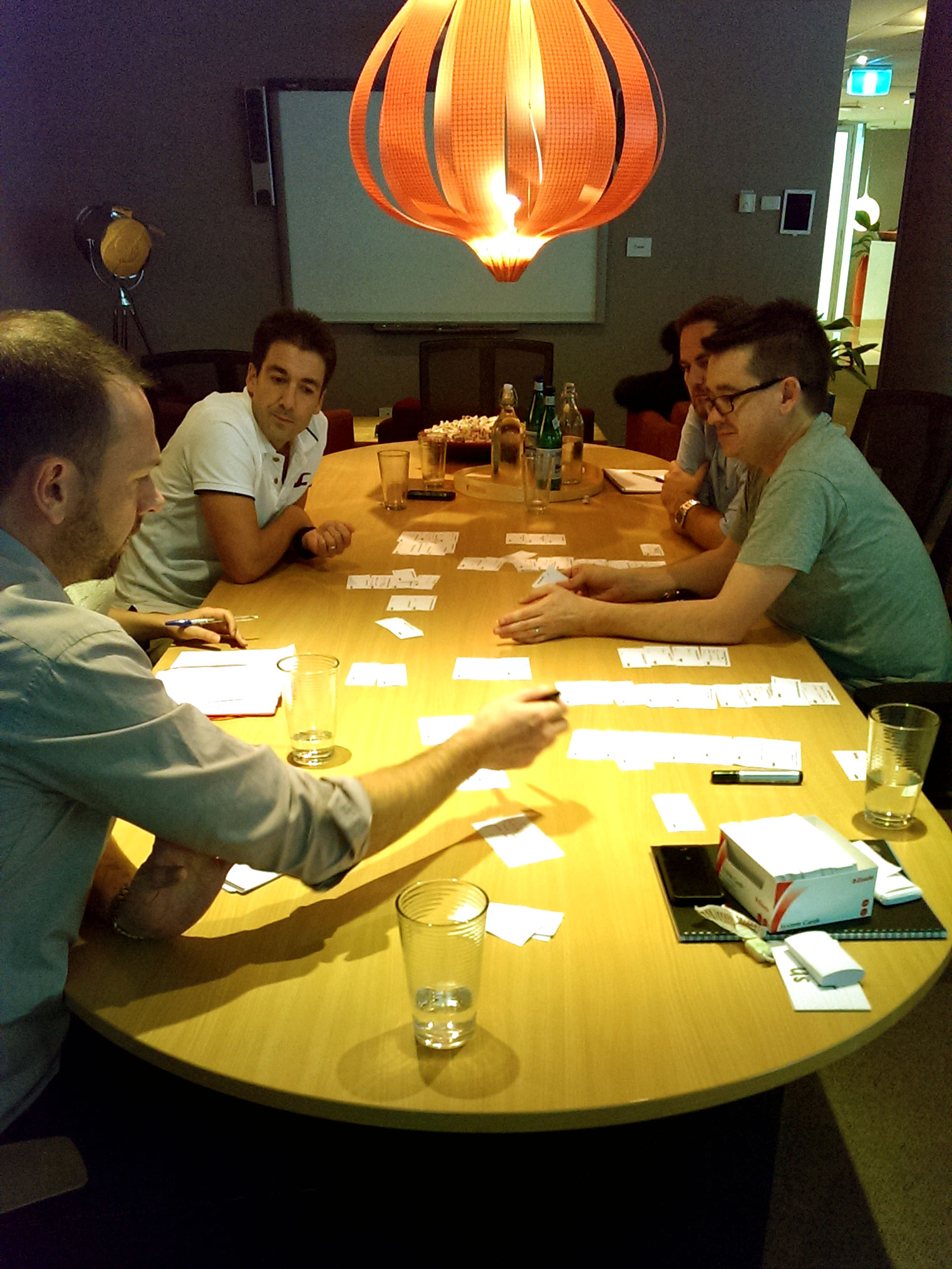Getting started with Card Sorting
We recently started work on a website that was struggling with a mass of content that had grown out of control. Rather than take our UX knife straight to the site, we started with a card sorting exercise as a means to understanding the purpose, relevance and value of each piece of content before we began organising it into a logical structure.
We’re still working through findings for this particular client but have already gained several valuable insights which will inform the functional and navigational structure of the new site.
So what is card sorting?
Ever played poker or any other card game with suits? The first thing you’d usually do after being dealt your cards would be to organise them into logical groupings - Heart, Diamonds, Spade and Clubs. Well, a card sorting exercise is kind of the same thing except rather than organising your cards into suits, you’re organising them into logical groups based around the type or function of the information that each card refers to.
There are several variations of the technique. For example, you may undertake the exercise individually or in a group relying where you’ll have to reach consensus. The exercise may be conducted using an ‘open’ or ‘closed’ approach – open being when the sort is started with no predetermined top level groupings verse closed whereby a number of headings are defined at the start of the exercise and cards grouped into those headings. The variation will depend upon the situation you’re sorting for (e.g. a new site vs fitting new content into an existing site).
How to do it
To begin with you’ll need between 30-100 cards around 10cm x 6cm in size. Go through your content and write a description of that content on each card until you have a card for every piece of content you intend to have on your site. Pro tip: Save some blank cards for new content that arises in the exercise or for notes.
In the case of an open card sorting exercise, shuffle the cards up and place them in a pile on the side of the table. Gather your participants, explain the exercise and then start turning cards over and placing them into logical groupings. There may be some discussion around where content should be categorised. That’s ok, in fact, it’s welcome as it highlights areas that needs further consideration.
If you can’t reach consensus on a particular placement, set the card in question aside and come back to it later on. The early stages of the exercise are often the hardest as there’s no established framework for placing cards.
Continue to process the cards and observe and listen for any patterns that may emerge. Keep the momentum going without leading the participants and keep an ear out for any insightful comments or questions that come up during the session.
Groupings may merge, change direction or get disregarded entirely. Again, consider the process as fluid and regard unexpected changes in patterns as a positive step in the process.
Once the process is complete, look to analyse any broad patterns that have emerged. If you’re doing an online card sorting exercise with many participants you may want to use cluster analysis software to look for patterns and areas of conflict/difference as they may indicate areas requiring further analysis.
While this exercise is nearly always useful, as with any methodology it has its own inherent pros and cons.
Pros
- It’s simple to execute. Card sorts are easy for the organiser and participants. Be sure to limit the time taken to an hour to avoid participant fatigue.
- It’s cheap. Beside the cost of a stack of blank cards, some pens and your time, this exercise is almost free to run and requires no expensive software.
- It’s quick. You’ll have the opportunity to access a significant amount of data in under an hour.
- Evidence based. Feedback is based on user input, not the opinion of a single person and should therefore more readily cater to real users.
Cons
- Doesn’t consider users’ tasks. Card sorting a content-centric technique that doesn’t consider users’ tasks. As such a supporting task analysis may also be required to ensure that content is sorted in a way that allows users to achieve tasks.
- Results may vary. Results may be fairly consistent amongst users or vary widely. Either way, you can’t rely solely on card sorting as a means to determining site content structure.
- Analysis will take time.While preparation and sorting of cards is quick, analysis of the data can be time consuming.
- You risk just scratching the surface. Top level headings may lead participants to not fully consider what the content is about or how they would use it to complete a task. Try to use clear card titles that reflect the type and use of content if actual content headings are misleading.

Card sorting in action!







